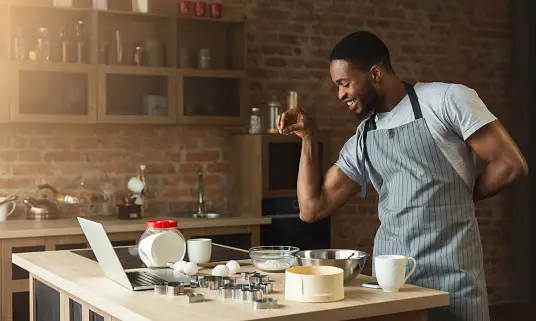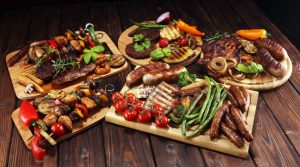Cooking is a blend of art and science that can transform simple ingredients into delightful meals. For home chefs, mastering essential cooking skills is not only about creating delicious dishes but also about gaining confidence and efficiency in the kitchen. Whether you’re a novice cook or looking to refine your culinary techniques, understanding the fundamental skills can make your cooking experience more enjoyable and successful. This comprehensive guide delves into the crucial cooking skills every home chef should master, offering detailed and up-to-date information to help you enhance your culinary prowess. From knife skills and heat control to mastering various cooking methods and developing rich flavor profiles, each section provides practical tips and techniques.
Additionally, you’ll learn the importance of kitchen organization, food safety, and continuous learning to keep your culinary skills sharp. By integrating these skills into your cooking routine, you’ll be able to create delicious, nutritious meals and explore new culinary horizons with confidence and creativity. Whether cooking for yourself, your family, or entertaining guests, mastering these essential cooking skills will elevate your kitchen experience and transform your approach to home cooking.
Understanding Basic Cooking Techniques
1. Knife Skills
Proper knife skills are fundamental for efficiency and safety in the kitchen. Mastering these techniques can significantly improve your cooking experience and the presentation of your dishes.
Key Knife Skills
- Holding the Knife: Grip the handle firmly with your dominant hand and rest your thumb and index finger on either side of the blade for better control.
- Basic Cuts: Learn to perform basic cuts such as chopping, slicing, dicing, and mincing. Each cut has its specific use and can affect the cooking time and texture of ingredients.
- Sharpening and Maintenance: Regularly sharpen your knives to maintain their edge and ensure clean cuts. Use a honing rod to keep the blade aligned and a whetstone for sharpening.
2. Understanding Heat Control
Heat control is crucial for achieving the desired texture, flavor, and doneness of your food. Different cooking methods require different levels of heat.
Types of Heat
- High Heat: Used for searing, grilling, and stir-frying. It quickly cooks the exterior of the food while keeping the inside moist.
- Medium Heat: Ideal for sautéing, simmering, and pan-frying. It allows for even cooking without burning the exterior.
- Low Heat: Perfect for slow-cooking, braising, and simmering sauces. It ensures thorough cooking and melding of flavors over time.
3. Sautéing
Sautéing is a quick cooking method that uses a small amount of oil or fat in a shallow pan over medium-high heat. It is ideal for cooking vegetables, meats, and seafood.
Steps for Perfect Sautéing
- Preheat the Pan: Ensure the pan is hot before adding oil. This prevents the food from sticking and helps achieve a good sear.
- Add Oil: Use just enough oil to coat the bottom of the pan. Allow it to heat until it shimmers.
- Add Ingredients: Add ingredients in a single layer to ensure even cooking. Avoid overcrowding the pan.
- Stir and Toss: Use a spatula or tongs to stir and toss the ingredients frequently for even cooking.
4. Roasting and Baking
Roasting and baking are dry-heat cooking methods that use the oven to cook food evenly and develop rich flavors.
Tips for Roasting
- Preheat the Oven: Always preheat your oven to the required temperature before placing your food inside.
- Use a Rack: Place meat or vegetables on a rack in a roasting pan to allow air circulation and even cooking.
- Season Generously: Use herbs, spices, and marinades to enhance the flavor of your food.
Tips for Baking
- Measure Ingredients Accurately: Use measuring cups and spoons to ensure precise ingredient quantities.
- Follow Recipes Closely: Baking is a science, so following recipes accurately is crucial for successful results.
- Maintain Oven Temperature: Avoid opening the oven door frequently to maintain a consistent temperature.
5. Grilling
Grilling is a popular cooking method that imparts a smoky flavor to food through direct heat. It is perfect for meats, vegetables, and even fruits.
Grilling Techniques
- Preheat the Grill: Ensure the grill is hot before placing food on it to achieve a good sear and prevent sticking.
- Oil the Grates: Lightly oil the grill grates to reduce sticking and enhance grill marks.
- Use Direct and Indirect Heat: For thicker cuts of meat, start with direct heat to sear, then move to indirect heat to finish cooking.
Mastering Cooking Methods
1. Boiling and Simmering
Boiling and simmering are essential methods for cooking grains, pasta, vegetables, and making stocks and soups.
Boiling
- Rapid Boil: Water is heated to a vigorous boil, ideal for cooking pasta and blanching vegetables.
- Salt the Water: Add salt to boiling water to enhance the flavor of the food being cooked.
Simmering
- Gentle Simmer: Water is kept just below boiling point with small bubbles forming. Ideal for cooking grains, making soups, and braising meats.
- Maintain a Consistent Temperature: Adjust the heat to keep the water at a steady simmer without boiling.
2. Steaming
Steaming is a healthy cooking method that preserves nutrients and flavors in food. It is suitable for vegetables, fish, and dumplings.
Steaming Techniques
- Use a Steamer Basket: Place food in a steamer basket over boiling water, ensuring it does not touch the water.
- Cover the Pot: Keep the pot covered to trap steam and cook the food evenly.
- Check for Doneness: Test the food for doneness by piercing it with a fork or knife.
3. Poaching
Poaching is a gentle cooking method where food is submerged in simmering liquid. It is ideal for delicate proteins like eggs, fish, and poultry.
Steps for Poaching
- Heat the Liquid: Bring the poaching liquid (water, broth, or wine) to a gentle simmer.
- Add Aromatics: Enhance flavor by adding herbs, spices, and aromatics to the poaching liquid.
- Submerge the Food: Gently place the food in the liquid and cook until done.
4. Braising and Stewing
Braising and stewing are slow-cooking methods that involve cooking food in a liquid over low heat. They are perfect for tough cuts of meat and hearty vegetables.
Braising
- Sear the Meat: Brown the meat in a hot pan to develop flavor.
- Add Liquid: Add a small amount of liquid (broth, wine, or water) to the pan.
- Cover and Cook: Cover the pan and cook at low heat until the meat is tender.
Stewing
- Cut Ingredients into Small Pieces: Cut meat and vegetables into uniform pieces for even cooking.
- Brown the Meat: Brown the meat to enhance flavor.
- Add Liquid and Simmer: Add enough liquid to cover the ingredients and simmer until everything is tender.
Developing Flavor Profiles
1. Seasoning
Proper seasoning is crucial for bringing out the natural flavors of ingredients and creating balanced dishes.
Essential Seasoning Tips
- Salt: Use salt to enhance the flavor of your food. Season throughout the cooking process, not just at the end.
- Acidity: Add acidity (lemon juice, vinegar) to brighten and balance flavors.
- Sweetness: Use sweetness (sugar, honey) to counterbalance acidity and bitterness.
2. Using Herbs and Spices
Herbs and spices are the building blocks of flavor in cooking. They add depth, complexity, and character to dishes.
Tips for Using Herbs and Spices
- Fresh vs. Dried: Use fresh herbs for a bright, fresh flavor and dried herbs for a more concentrated taste.
- Timing: Add hearty herbs (rosemary, thyme) early in the cooking process and delicate herbs (basil, parsley) at the end.
- Toasting Spices: Toast whole spices in a dry pan to enhance their flavor before using them.
3. Making Sauces
Sauces can elevate a dish from good to extraordinary. Mastering basic sauce-making techniques is essential for every home chef.
Essential Sauces
- Béchamel: A white sauce made from butter, flour, and milk. It is the base for many other sauces.
- Tomato Sauce: A simple sauce made from tomatoes, garlic, onions, and herbs.
- Pan Sauce: Made from the drippings left in the pan after cooking meat, deglazed with wine or broth, and finished with butter.
4. Marinating
Marinating is a technique used to infuse flavor and tenderize meat, poultry, and fish.
Tips for Marinating
- Ingredients: Use a combination of oil, acid (vinegar, citrus juice), herbs, and spices.
- Time: Marinate for at least 30 minutes and up to 24 hours, depending on the type and cut of meat.
- Proper Storage: Marinate food in the refrigerator to prevent bacterial growth.
Baking Fundamentals
1. Measuring Ingredients
Accurate measurement is crucial in baking to achieve consistent and successful results.
Tips for Measuring
- Dry Ingredients: Use measuring cups and level off the top with a knife for accuracy.
- Wet Ingredients: Use liquid measuring cups and check at eye level.
- Weighing Ingredients: Use a kitchen scale for precise measurements, especially for flour and sugar.
2. Mixing and Kneading
Proper mixing and kneading techniques are essential for developing the right texture in baked goods.
Mixing Techniques
- Creaming: Beat butter and sugar together until light and fluffy, incorporating air for a tender texture.
- Folding: Gently incorporate ingredients to avoid deflating batters or doughs.
- Kneading: Work dough to develop gluten, giving bread its structure and chew.
3. Proofing
Proofing is the process of allowing dough to rise, which is crucial for the texture and flavor of bread and pastries.
Proofing Tips
- Warm Environment: Allow dough to rise in a warm, draft-free place.
- Timing: Follow the recipe’s recommended proofing times for optimal results.
- Cover the Dough: Cover the dough with a damp cloth or plastic wrap to prevent it from drying out.
4. Baking Techniques
Mastering baking techniques ensures that your baked goods come out perfectly every time.
Baking Tips
- Preheat the Oven: Always preheat your oven to the required temperature before baking.
- Use the Right Pan: Use the correct size and type of pan as specified in the recipe.
- Check for Doneness: Use a toothpick or cake tester to check if baked goods are done. It should come out clean or with a few crumbs.
Presentation and Plating
1. Plating Techniques
Plating is the art of arranging food on a plate in an appealing way. Good presentation can enhance the dining experience.
Plating Tips
- Use Contrasting Colors: Use ingredients with different colors to make the dish visually appealing.
- Create Height: Add height to your plating by stacking or layering ingredients.
- Garnish: Use fresh herbs, edible flowers, or a drizzle of sauce to add the finishing touch.
2. Serving Temperature
Serving food at the right temperature ensures the best texture and flavor.
Temperature Tips
- Hot Foods: Serve hot foods immediately to maintain their texture and flavor.
- Cold Foods: Chill cold foods thoroughly before serving.
- Room Temperature: Best foods, like cheese and cured meats, are best served at room temperature to enhance their flavors.
Kitchen Organization and Efficiency
1. Mise en Place
Mise en place is a French term meaning “everything in its place.” It involves preparing and organizing ingredients before cooking.
Benefits of Mise en Place
- Efficiency: Speeds up the cooking process by having everything ready to go.
- Organization: Keeps your workspace tidy and reduces stress.
- Accuracy: Ensures that you don’t forget any ingredients.
2. Clean as You Go
Maintaining a clean kitchen while cooking can prevent clutter and make the cooking process more enjoyable.
Cleaning Tips
- Clean Up Spills Immediately: Prevents messes from spreading and makes cleaning easier.
- Wash Utensils and Equipment: Clean utensils and equipment as you finish using them.
- Organize as You Cook: Put ingredients and tools back in their place as you use them.
3. Food Safety
Food safety is crucial to prevent foodborne illnesses and ensure the health of those who eat your food.
Food Safety Tips
- Hand Washing: Wash hands thoroughly with soap and water before and after handling food.
- Cross-Contamination: Use separate cutting boards and utensils for raw meat and other ingredients.
- Cooking Temperatures: Cook meat and poultry to the recommended internal temperatures to ensure they are safe to eat.
Expanding Your Culinary Knowledge
1. Exploring World Cuisines
Exploring different cuisines can expand your culinary skills and introduce you to new flavors and techniques.
Tips for Exploring Cuisines
- Try New Recipes: Experiment with recipes from different cultures.
- Learn About Ingredients: Research unique ingredients and their uses in various cuisines.
- Cook with Authentic Methods: Use traditional cooking methods to achieve authentic flavors.
2. Continuous Learning
Cooking is a continuous learning process. Stay curious and open to new techniques and knowledge.
Learning Resources
- Cookbooks: Invest in quality cookbooks from reputable chefs and authors.
- Cooking Classes: Attend cooking classes to learn new skills and techniques.
- Online Tutorials: Watch online cooking tutorials and demonstrations for inspiration and guidance.
3. Experimentation
Don’t be afraid to experiment in the kitchen. Trying new combinations and techniques can lead to delicious discoveries.
Experimentation Tips
- Modify Recipes: Adjust recipes to suit your taste and dietary preferences.
- Create New Dishes: Combine ingredients and techniques to create your own unique dishes.
- Taste and Adjust: Continuously taste your food as you cook and adjust seasonings as needed.
Conclusion
Mastering essential cooking skills is a journey that requires practice, patience, and a willingness to learn. By understanding basic cooking techniques, mastering various cooking methods, developing flavor profiles, and maintaining an organized kitchen, you can elevate your home cooking to new heights. Continuous learning, exploration of world cuisines, and experimentation will keep your culinary skills sharp and your meals exciting. Whether you are a novice cook or an experienced home chef, these skills and techniques will help you create delicious, satisfying meals for yourself and your loved ones.




